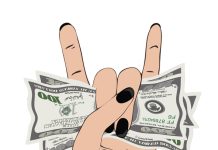
Sampling has long been a cornerstone of musical innovation, particularly in genres like hip-hop, EDM, and pop. By taking snippets of existing songs and blending them into new creations, artists can craft unique sounds that honor the past while forging something fresh. However, as the practice has evolved, so too have the legal complexities surrounding it. For musicians, understanding how to sample music legally is essential to avoid costly lawsuits and protect their creative work.
Understanding Music Sampling and Copyright
At its core, sampling involves using a portion of one sound recording in the creation of a new track. Whether it’s a few seconds of a guitar riff or a longer vocal line, any part of a copyrighted song is protected under copyright law. This means that if you want to use a sample, you need to obtain the proper licenses to do so legally.
There are generally two types of copyrights to consider when sampling music:
- Sound recording rights: These protect the specific recording of the music.
- Composition rights: These cover the underlying song, including its melody and lyrics.
Both types of permissions are usually required to legally sample music, meaning artists must often negotiate with multiple parties, such as the original artist, the record label, and the publisher.
How to Legally Clear a Sample
The most straightforward way to avoid legal issues when sampling is to clear the sample. This involves contacting the copyright holders and securing permission, often in the form of a license agreement. The cost of this can vary depending on the sample’s length and how prominently it features in your new work. Typically, the bigger the artist or the more recognizable the sample, the higher the licensing fees.
Here’s a simplified breakdown of the process:
- Identify the copyright holders: Use resources like ASCAP, BMI, or Harry Fox Agency to locate the song’s owners.
- Submit a sample request: Provide details on how the sample will be used, including the duration and its role in the new song.
- Negotiate a license: This often includes upfront fees and sometimes a share of future royalties.
While this process can be time-consuming, failing to secure the necessary permissions can result in hefty fines, lawsuits, or even the removal of your music from streaming platforms.
Fair Use and Its Limitations
Some musicians may wonder whether their sampling could fall under fair use—a legal doctrine that allows for limited use of copyrighted material without permission. However, relying on fair use is risky. Courts typically look at several factors, including whether the new work transforms the original in a significant way and whether it harms the market for the original song.
Notably, fair use is often used as a defense in legal battles rather than a proactive permission. Thus, artists should avoid depending on it as a primary strategy for sampling. Instead, consider clearing the sample or using royalty-free sample packs that have pre-cleared usage rights.
Famous Legal Battles Over Sampling
Several high-profile lawsuits serve as cautionary tales for artists who sample without proper clearance:
- Vanilla Ice vs. Queen and David Bowie: Vanilla Ice’s 1990 hit “Ice Ice Baby” famously sampled Queen and Bowie’s “Under Pressure” without permission. The case was settled out of court, but it set a precedent for sampling disputes.
- Blurred Lines Case: Pharrell Williams and Robin Thicke were sued by the family of Marvin Gaye over the song “Blurred Lines,” which was found to infringe on Gaye’s “Got to Give It Up.” The court awarded Gaye’s estate $7.4 million, showcasing the financial risk of copyright infringement.
Practical Tips for Musicians
- Clear Every Sample: Whether you’re using a well-known track or an obscure recording, make sure to obtain the proper licenses. Even a small, unrecognized sample can lead to significant legal troubles.
- Consider Alternatives: Use royalty-free sample packs if obtaining clearance for certain samples is too costly. While these packs offer pre-cleared sounds, keep in mind they may limit originality.
- Work with Professionals: Consider hiring a copyright clearance service or entertainment lawyer to navigate the complexities of sampling. These professionals can ensure that you stay compliant and avoid legal pitfalls.
Conclusion
Music Industry Weekly recognizes that In today’s music landscape, sampling continues to be an essential tool for creativity. However, understanding the legal requirements is crucial to avoid costly mistakes. By taking the time to clear samples, seeking professional advice, and adhering to copyright laws, artists can safely incorporate others’ work into their music while protecting their creations.







